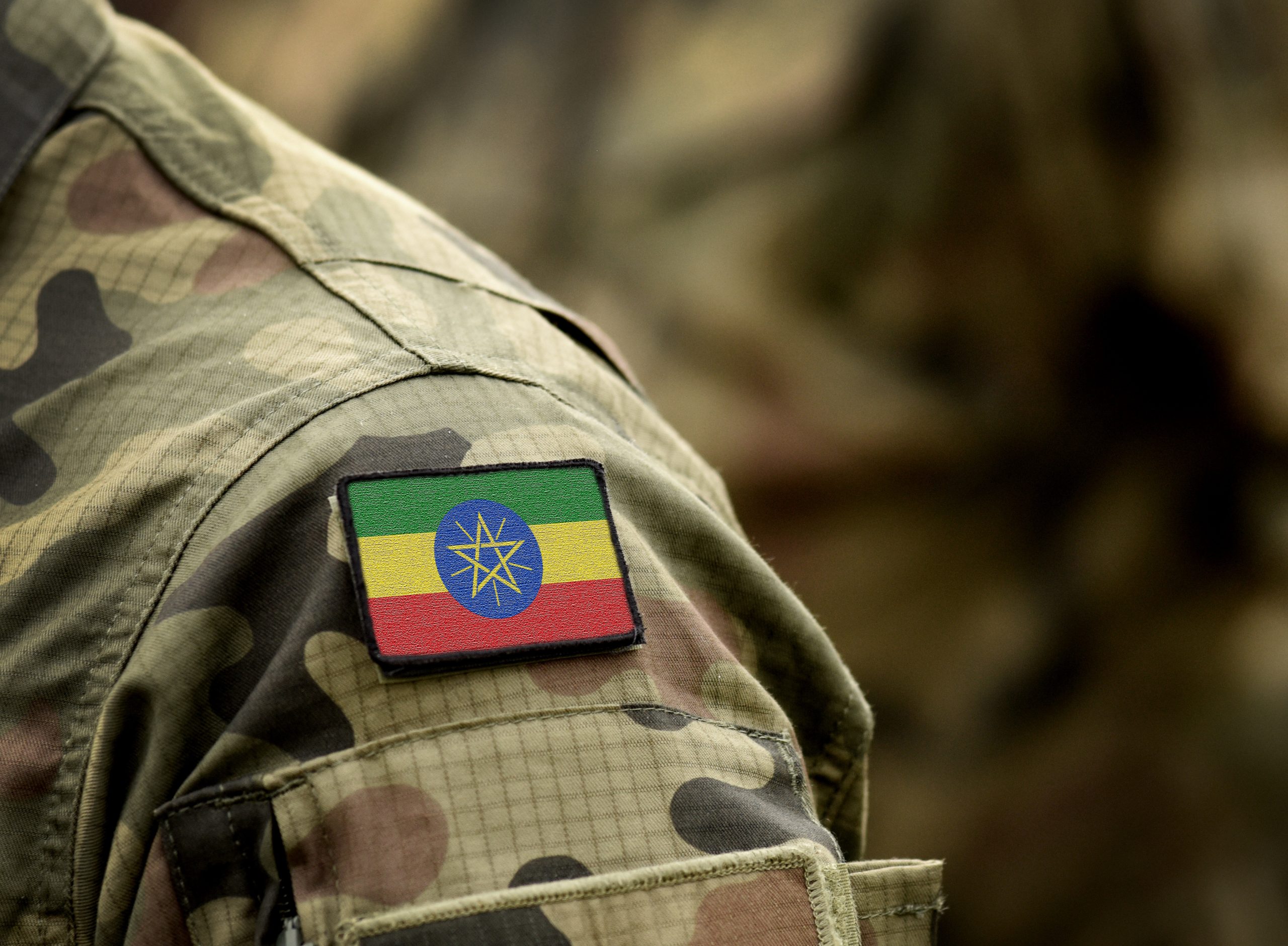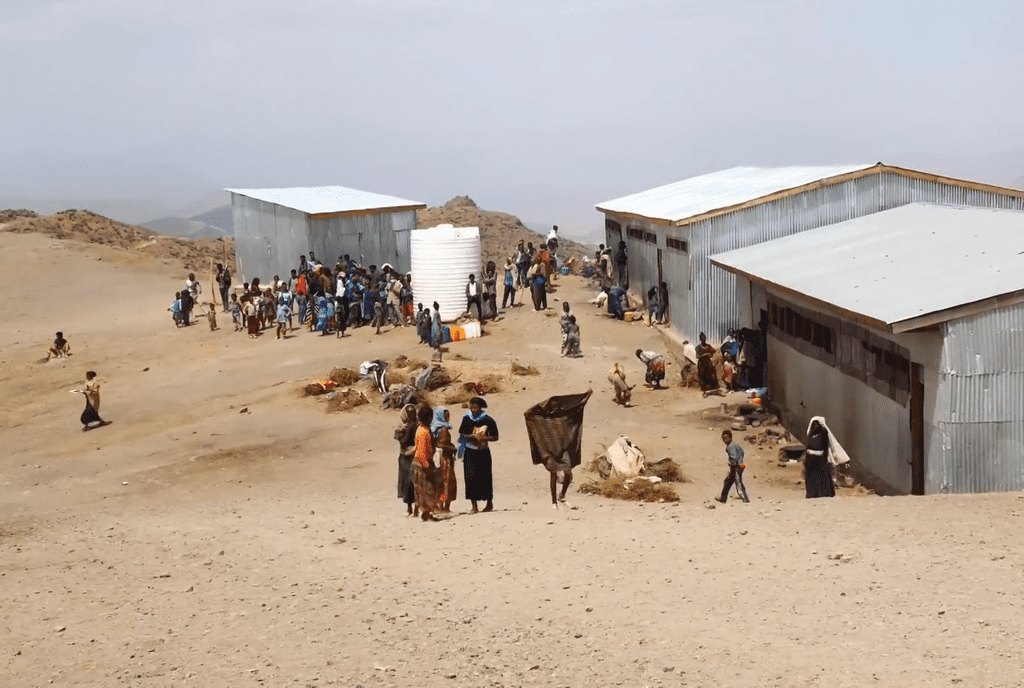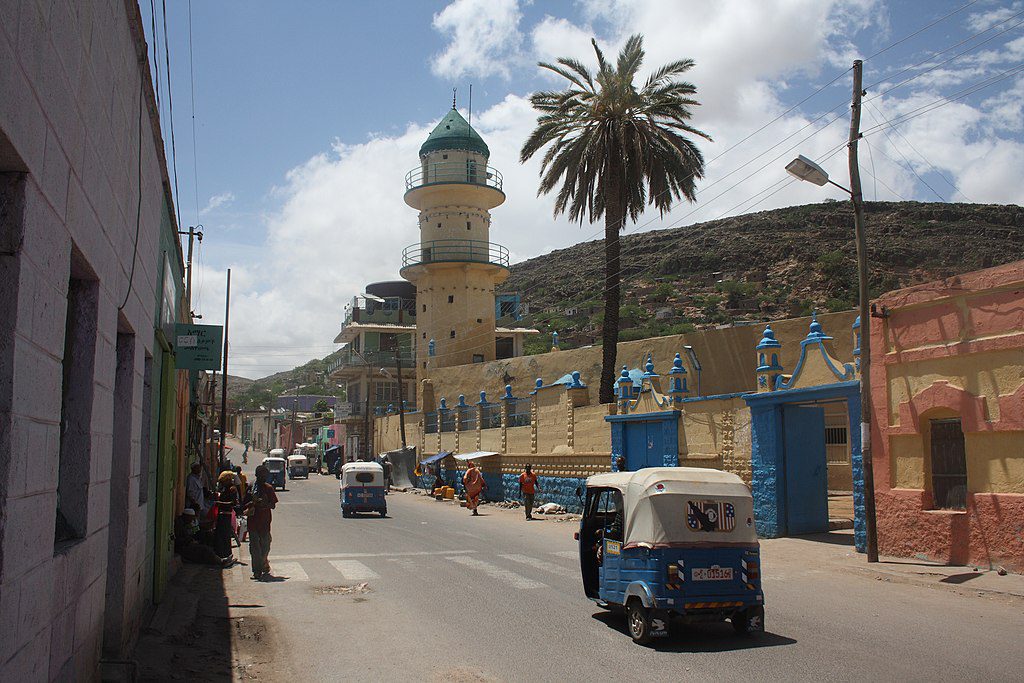Ethiopian Prime Minister Abiy Ahmed is at war with the Amhara and Oromo and he is beating the drums for a new war with Eritrea. He is talking publicly about Ethiopia’s greatness by taking a seaport by force of arms. Abiy’s public rhetoric and the repeated press statements of his generals, ‘we are preparing for a new war’, seem to indicate that the regime is readying its people to go to war again. They appear to believe that a victory is possible and that it will solve Ethiopia’s problems.
Abiy has his sights on the Eritrean port of Assab, which was Ethiopia’s main port until the independence of Eritrea in 1993, though Somalis fear that he may also be eyeing Zeila in Somaliland, which was once Ethiopia’s access to the sea in earlier centuries.
Tigray is the calm eye of the coming storm. Ironically, after being ravaged by the armies of the Federal Government of Ethiopia and the State of Eritrea in the war of 2020-2022, Tigray is now being courted by all its former enemies and belligerents to join forces against the other.
The international community has so far been confused and apparently powerless in trying to stop the slide to Abiy’s new war. If and when this conflict takes place, with Sudan at war with itself, the new conflict of Somaliland with its Southern brothers and the war against Al Shabab in the rest of Somalia, most of the Horn of Africa will be at war and the task of the world would be to deal with a regional war. The war will also be on one of the busiest shipping routes, already disrupted by the Houthi attacks on merchant shipping, that will directly have major implications to world trade. It is therefore important to identify the critical path in averting this looming war. Tigray is the critical piece in the strategic chessboard. Diplomats and donors should therefore focus their efforts on Tigray.
The Status of the Main Security Actors in the Region
The status of the Ethiopian National Defense Force (ENDF)
The ongoing military engagement of the ENDF against the Amhara Fano militia and the Oromo Liberation Army (OLA) in Oromia, and the failures of its attempts to achieve battlefield victory, indicate that the ENDF today is less of an army and more of a gathering of conscripts in uniform.
The strength of the ENDF lies in air fire support and logistics. Ethiopia is importing weapons accordingly. Most recently, dozens of flights from Abu Dhabi are reported to have unloaded cargoes of military supplies. It is reported that the regime has recently acquired upgraded Turkish drones. It is also reported that the regime has obtained new equipment for battlefront communication warfare including radar and radio communication jamming equipment.
The status of the Eritrean Defense Force (EDF)
Eritrean President Isaias Afewerki also appears to be preparing for a new war. There is news that the EDF is acquiring new air fire support including drones and anti-drone defense equipment. It is reported that the EDF is engaged in a massive draft of new recruits and has recently begun deploying troops to the border areas of Ethiopia particularly towards the Assab front. Isaias was engaged in training and arming the Amhara Fano beginning the height of the Tigray war. According to sources of the Ethiopian government, Isaias has intensified that support. Now that his anti-Tigrayan alliance with Abiy is officially broken, he is also engaged in political rhetoric that emphasizes the incapability of Abiy’s regime to govern Ethiopia.
As well as responding defensively to whatever might come from Ethiopia, it is also possible that Isaias may opt for a pre-emptive attack, anticipating a war that he sees as inevitable, or escalate the conflict in Amhara region.
The status of the Amhara Fano militia
The Amhara region is increasingly sinking into a bloody quagmire. The Amhara Fano militia began as groups led by former “Kefagne”, “Arbegnoch” and later, “Arbegnoch Ginbot Sebat” combatants[1] used as force multipliers by Abiy in his war against Tigray in 2020. They evolved towards an Amhara resistance force that claims to fight for controlling political power and restructuring the Ethiopian state. Following the signing of the November 2022 Pretoria Agreement, Abiy decided to downsize the Amhara special police by partly integrating it into the ENDF and partly assigning it to local police in the form of riot control units. Furthermore, he decided to disarm the Fano.
During this time, the Amhara peasants had already given up hope of getting any credible services from the federal and Amhara regional governments. The regime failed to deliver the kinds services that people had come to expect, such as the supply of fertilizers, selected seeds, and access to capital through rural based micro-finance institutions. Furthermore, the peasants were extremely frustrated by the extortionist policy of the regime and its failure to provide essential governance such as law and order. The peasants compared Abiy’s regime unfavorable with its predecessor and withdrew their support from his government. These developments together with the disfranchisement of the Fano militia combined to foster a sense of outrage among the Amhara people, who came to reluctantly support the rebellion against the regime.
The Amhara Fano is large in numbers but weak in terms of organizational capacity. Its key weaknesses are: lack of clear political objective; absence of organized leadership; and its supply of ammunition and guns being dependent on war booty except for the trickle support from Eritrea. However, it has commensurate strengths. These include: each of its groups is fighting in a territory they know; the geographical depth and favorable mountainous terrain of the Amhara region; the complete isolation of the Amhara people from the federal and regional governments and the people’s relative sympathy to the rebellion. As a result, the rebellion has persevered despite the full offensive of the ENDF. It has made the region the region ungovernable ; crippled major road connections (examples include: A3 highway connecting Addis-Debre Markos-Bahir Dar- to Gonder; A2 highway connecting Addis-Dessie-Mekelle; B22 highway connecting Wello Gojam and Gonder originating from Wereta passing via Amara Sayint crossing to Southern Wello; and B31 connecting Bahir Dar to the west); it loosely controls most of the rural areas of the Amhara region and some district towns while occasionally mounting offensives against ENDF forces in the major towns.
The record of the war in the Amhara region thus far indicates that neither side can win. The ENDF cannot crush the Fano. The Amhara resistance cannot achieve more than making the region ungovernable. The Fano can neither govern the region nor take political power in Addis Ababa. To change the stalemate both sides (ENDF and the Fana) may also call upon Tigrayans to take their side. It is reported that Abiy has asked the Tigray Defense Force (TDF) to join him in the war against the Fano, which the Tigrayans rejected him claiming that they have their wounds to heal. Amhara political activists are also repeatedly heard that all would have changed had there been an alliance between the TDF and the Amhara Fano.
The status of the Tigray Defense Force (TDF)
Following the Pretoria Agreement, the TDF agreed to be demobilized and reintegrated into other security institutions and civilian life, including a contingent joining the national army. However, the Agreement specifies that TDF demobilization is contingent upon two things: (a) full withdrawal of non-ENDF and foreign forces from the administrative boundary of Tigray, allowing the constitutionally-authorized authorities to return; and (b) the availability of programs and resources to properly rehabilitate the combatants into productive civilian life.
Neither condition has been met. The occupying forces have not withdrawn from Tigray and the administrative boundary of Tigray has not been reinstated. A proper rehabilitation program and package for the return of combatants into civilian life is not yet in sight. When asked about this, Abiy, reneging upon the Pretoria Agreement, has spoken of what can be called a ‘phony referendum’[2] in occupied Western Tigray to determine its fate, prior to returning the status quo and redressing the ethnic cleansing campaign. The promise of reintegration is also not in place. Tigray has sent over 50,000 combatants home providing each one with a three months’ stipend promising that reintegration package will then be provided. But, six months on, nothing is yet available. For this reason, over 200,000 TDF combatants and their commanders are still in their formed units.
There is a broader failure of the Pretoria Agreement too. It contains no actionable commitments to the rehabilitation of Tigray. The rationale for excluding international donors from any role in the negotiations and not having an economic component to the talks is becoming clear. Abiy’s intent is to continue to keep Tigray in a desperate condition so that he can bargain for Tigrayan support for his next political move, in this case a new military adventure.
War Scenarios
It now appears that three of the major forces: ENDF, EDF, and the Amhara forces are separately looking for some sort of partnership with the TDF. There are two reasons why Tigray is being sought as an ally. The first is that the Tigray Defense Force is a capable and disciplined army capable of winning battles and holding territory. With the other armies in the region depleted, demoralized and lacking cohesion, the TDF could be the kingmaker. The second reason is that Tigray region is strategically located. If Abiy wants to go ahead with a plan of attacking Eritrea and annexing the port of Assab, the border between Tigray and Eritrea will be the main battlefront. If Eritrea wants to resist such an attack, or take the war to Ethiopia, Tigray is essential.
There are different scenarios in the alignment of forces in the current standing. Here under are the few possibilities and the scenarios that follow.
If Tigray were to side with Abiy, he would be confident that his air fire superiority could destroy the mechanized forces of the EDF, which are its key capability, enabling the TDF ground forces to secure victory on the battle front. However, victory in war is a political achievement. If an ENDF-TDF coalition were to successfully occupy Assab, it would be a flagrant violation of the principle of territorial inviolability and would without doubt immediately invoke international sanctions. Ships would not be able legally to use the port. If the ENDF and TDF were to occupy Asmara, that wouldn’t be an end to the conflict. Eritrean resistance would continue. The war would be economically ruinous.
If Tigray were to join a the ENDF counter-insurgency in Amhara, the TDF might be able to do something that the ENDF cannot, which is take and hold territory, but this would only complicate the conflict in the Amhara region. It would not resolve the internal political issues within Amhara region and it would reignite Amhara-Tigrayan antagonisms.
If Tigray were to establish the opposite military alliance, joining forces with the Fano and/or EDF it could achieve some battlefield successes but could not solve political problems.
The combined strength of the EDF and TDF might be sufficient to defeat the ENDF.
If Tigray were to ally with the Amhara rebellion, the Fano would obtain organizational skills, command experience and leadership capabilities for conventional warfare while the TDF would gain geographical depth. A combination of Eritrea, Fano and the TDF in alliance would open up the scenario of a military victory over the regime in Addis Ababa.
However, this would not bring a stable government in Addis Ababa. Isaias is not going to stop his dictatorial ways, and he remains the most persistent force of destabilization in the region. Any partnership between the Amhara Fano and the Tigrayans will not bring about a legitimate and stable government in Addis Ababa. An extended conflict with the Oromo and possibly other groups may well follow.
In summary, any new war would not bring political solutions. Moreover, it would be hugely costly in terms of human lives, destruction of livelihoods and economic infrastructure, and creating chaos. The idea that a war could be ‘won’ in any meaningful way is simply wrong.
A Way Forward
Tigray’s dilemma is that the status quo is intolerable. Much of Tigray is occupied by either Eritrea or Amhara region and the residents are displaced. Humanitarian aid is pitiful and is in famine situation caused by drought, destruction of the environment, and wider displacement along with the complete absence of meaningful reconstruction effort. Tigrayans are hungry and frustrated and already entering into another humanitarian disaster.
As it is, Tigray cannot stay for long without either seeing significant progress on what has been agreed in Pretoria, or making its strategic decision to act one way or the other.
The first issue demanding action is restoration of the pre-war boundaries of Tigray. This includes the evacuation of Amhara forces from those areas they have occupied and the return of the IDPs to their homes, and the evacuation of Eritrean forces. These two withdrawals require international diplomatic engagement. The United States and European Union, which championed the Pretoria Agreement, cannot leave the implementation to the discretion of Abiy. Abiy Ahmed should publicly declare of the return of the Amhara-occupied areas of Western Tigray and parts of southern Tigray, with Tigrayan administration reinstated. Concerning the
55 kebeles occupied by Eritrea, Abiy should demand that the occupying forces vacate them and hand them back to Tigray. Isaias is not likely to listen to Abiy, but he should listen to international donors that are seeking to prevent a war.
For all areas under occupation, whether by Amhara regional forces or the EDF, the return of IDPs in an orderly, assisted and expedited manner is essential.
The second issue is provision of humanitarian aid. The flow of relief aid to Tigray is absolutely pitiful in comparison with need. Over 90 percent of the population needs humanitarian assistance. Many in conditions of humanitarian emergency or famine. humanitarian emergency or famine. The rehabilitation of water, health and other essential services has hardly begun.
The interim regional administration is under an immense pressure from its population to do something—anything—to end the crisis. It would be ready to take risks. Unless the international community acts to ameliorate the current miseries, Tigrayans cannot be expected to wait indefinitely under current conditions in which they are dying of hunger and disease and suffering dislocation and despair.
Under these pressures, members of the TDF may prefer to dying in a fight against the forces that caused their misery and death. Tigray could feel itself compelled to act and forge some form of alliance with one of the external forces in order to defeat the other.
Conclusion
The fatal flaw that could bring the Horn of Africa into all-out generalized war is the misconception that a war can actually be won and that battlefield victories can be translated into political solutions. Abiy is prone to this kind of erroneous thinking.
It is evident that the critical actor in today’s strategic game is Tigray. Without the cooperation of Tigray, neither Abiy and Isaias can realistically consider going to war. Additionally, the Fano resistance will remain confined to the Amhara region. A clear decision by Tigray to renounce a new war should oblige each of the main belligerents to rethink.
A Tigrayan decision in favor of neutrality would not automatically bring peace in the region. Rather, such a decision will leave things as they are giving a chance for a diplomatic opening to work for peace.
Tigray should clearly and definitively renounce war. But Tigrayans need practical encouragement from the international community to do so. Diplomats and aid donors can prioritize the implementation of the Pretoria Agreement and the provision of essential humanitarian and reconstruction aid. This will give Tigrayans the confidence that they can resist the poisonous offers coming from Addis Ababa and Asmara and help prevent another needless war with its untold consequences.
[1] “Kefagne”, “Arbegnoch” and later “Arbegnoch Ginbot Sebat” were the names given to armed groups that Isaias Afewerki used as pawns for his fight against Ethiopia during the time of the EPRDF. Following the agreement between Isaias and Abiy in 2018, these groups were handed back to Ethiopia in the name of joining a peaceful political struggle.
[2] The word was used by Senator Brad Sherman to indicate a referendum after ethnic cleansing. The prospect of doing this in areas in which Tigrayans have been replaced by new settlers is presumptuous and will be rejected by Tigray.



